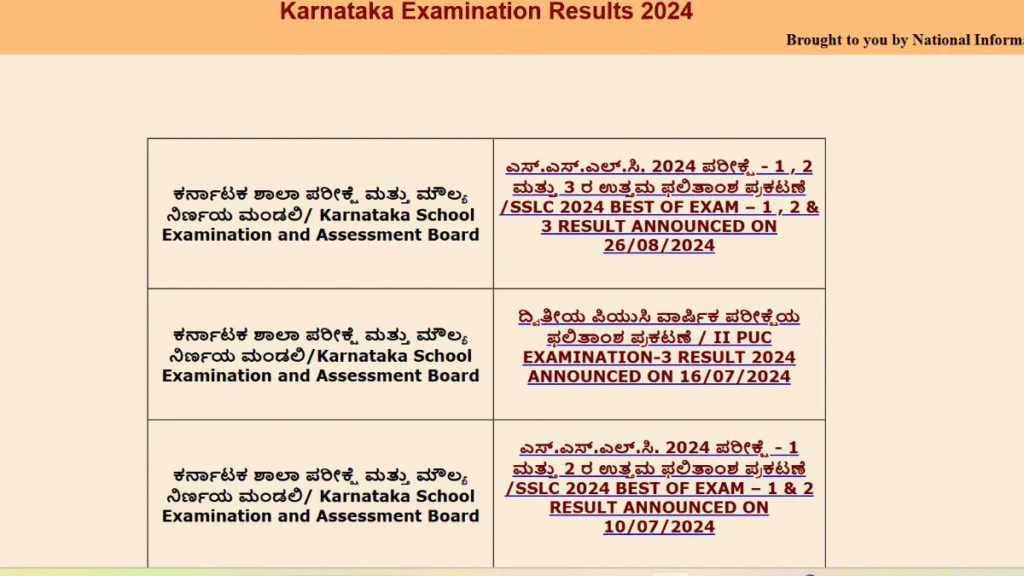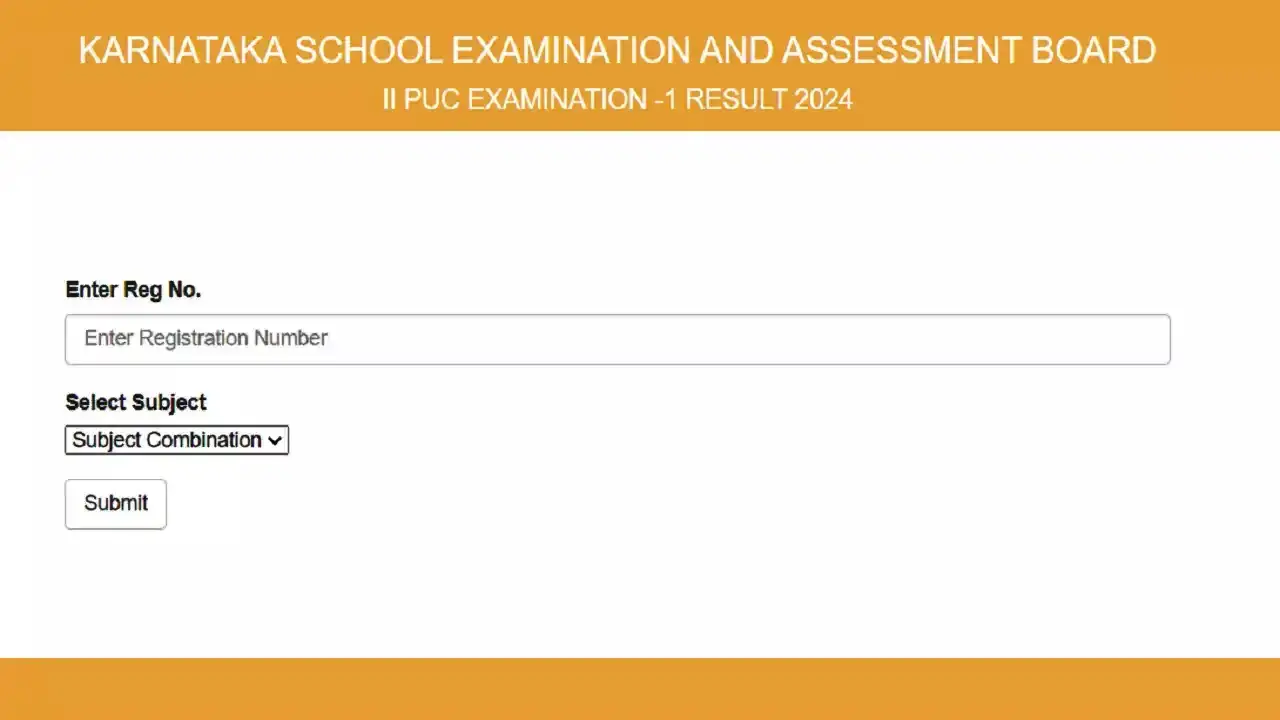
The much-anticipated results of the Karnataka 2nd PUC Exam 2 for 2025 have finally been announced. With an overall pass rate of 31.27%, students, parents, and educators have been keenly analyzing the outcomes. This examination holds a significant place in the academic journey of students as it determines their eligibility for higher education and opens doors to various career opportunities. Let’s delve into the details of the results, the revaluation process, and insights into the upcoming Exam 3.
A Closer Look at the Results
The Karnataka 2nd PUC Exam 2 is a supplementary exam conducted for students who couldn’t clear all their papers during the main examinations. This year, the overall pass percentage stands at 31.27%, reflecting both the challenges faced by students and the efforts put forth to overcome them. While this number indicates a marginal improvement from last year’s supplementary results, it also highlights the need for focused academic support for students struggling with their curriculum.
Among the districts, Bengaluru Urban recorded the highest pass percentage, showcasing a consistent trend of academic excellence. On the other hand, rural districts such as Yadgir and Raichur displayed comparatively lower pass rates, emphasizing the disparity in educational resources and accessibility. The results underscore the necessity for equitable distribution of quality education across the state.
The pass percentage also indicates the effectiveness of the current teaching methodologies and the role of schools and colleges in providing adequate support to students. Experts have pointed out that the availability of coaching classes, digital learning tools, and remedial teaching sessions in urban areas contribute significantly to the higher pass rates in cities like Bengaluru. However, rural areas face challenges such as limited access to qualified teachers and infrastructure deficiencies, which adversely affect student performance.
Gender-Wise Performance
Gender-wise analysis reveals that female students have outperformed their male counterparts yet again. The pass percentage for girls stands at 35.42%, whereas boys recorded a pass rate of 27.89%. This consistent trend of better performance by female students can be attributed to their disciplined approach and dedication. However, the lower pass rate among boys calls for a deeper evaluation of factors that might be contributing to this gap.
Educationists believe that societal factors, peer pressure, and lack of motivation could be some of the reasons for the performance disparity. Additionally, boys often face distractions and societal expectations that may affect their focus on academics. Addressing these issues requires a balanced approach involving counseling, mentorship, and the promotion of gender-neutral educational practices.
Stream-Wise Insights
Breaking down the results by stream, the science stream recorded the highest pass rate, followed by commerce and arts. This trend is reflective of the growing inclination towards science-related fields among students. However, the arts stream, with the lowest pass rate, highlights the challenges faced by students in this domain, possibly due to a lack of comprehensive resources or guidance.
The science stream’s success can be attributed to the availability of robust resources such as online tutorials, well-equipped laboratories, and focused coaching for competitive exams like NEET and JEE. On the other hand, arts students often struggle with limited access to career guidance and specialized study materials, which could explain their comparatively lower performance. Bridging this gap requires targeted initiatives aimed at enhancing the quality of education across all streams.
Revaluation Process
For students who are dissatisfied with their results, the Karnataka Pre-University Education Board offers a revaluation process. This option enables students to have their answer scripts reviewed for potential errors in evaluation or totaling. The application process for revaluation is straightforward and can be completed online through the official board website. Students are advised to adhere to the deadlines for submission and ensure that their applications are complete in all respects.
The fee structure for revaluation varies depending on the number of subjects. While it may seem like an additional expense, this process has proven to be a crucial step for many students in the past, often leading to improved scores and relief from academic pressure. Additionally, students can apply for photocopies of their evaluated answer sheets to understand their performance better. This transparency in the evaluation process has been widely appreciated by both students and parents.
Importance of the 2nd PUC Exam 2
The 2nd PUC Exam 2 serves as a vital opportunity for students to clear their academic backlogs and progress in their educational pursuits. For many, this examination is a second chance to achieve their academic goals and move closer to their dream careers. The supplementary exam acts as a safety net, allowing students to rectify their past shortcomings and prove their capabilities.
Moreover, the results of this examination significantly impact the overall academic statistics of the state. They provide insights into areas that require improvement and help policymakers and educators devise strategies to enhance the quality of education. The 2nd PUC Exam 2 also plays a crucial role in reducing dropout rates, as students who pass are more likely to continue their studies and pursue higher education.
Exam 3: What’s Next?
Following the announcement of the 2nd PUC Exam 2 results, the focus now shifts to the upcoming Exam 3. This examination is designed for students who couldn’t pass in the second attempt or missed the exam due to valid reasons. The board has already released a tentative schedule for Exam 3, and students are encouraged to begin their preparations without delay.
The Exam 3 syllabus remains unchanged, ensuring consistency in the assessment process. Students can utilize resources such as previous year’s question papers, model tests, and online tutorials to enhance their preparation. Additionally, the board has announced special coaching sessions in select districts to support students aiming to clear Exam 3 successfully. These coaching sessions are expected to focus on critical subjects and provide personalized attention to students.

Educational institutions have also been urged to conduct preparatory classes and mock tests to help students gain confidence. Teachers play a pivotal role in motivating students and addressing their doubts, ensuring that they are well-prepared for the examination.
Challenges Faced by Students
The journey to academic success is fraught with challenges, and students appearing for supplementary exams often face additional hurdles. Lack of motivation, societal pressure, and inadequate resources are some of the common obstacles that hinder their performance. Addressing these issues requires a multi-faceted approach involving parents, teachers, and the community.
Students from economically disadvantaged backgrounds often face the dual burden of financial constraints and academic challenges. Many of them have to juggle studies with part-time jobs, which affects their preparation and performance. Scholarships and financial aid programs can provide much-needed support to such students, enabling them to focus on their studies.
Counseling sessions and mentorship programs can play a pivotal role in boosting the morale of students. Schools and colleges must also step up their efforts in providing personalized attention to students who require additional support. Moreover, government initiatives aimed at bridging the urban-rural education divide can go a long way in ensuring equal opportunities for all students.
Parental Support: A Key Factor
Parental support is crucial during this phase of a student’s academic journey. Encouragement, understanding, and guidance from parents can significantly impact a student’s performance. Instead of succumbing to societal pressure, parents should focus on creating a positive and nurturing environment at home. Celebrating small achievements and providing constructive feedback can help students regain their confidence and perform better in future exams.
Parents must also take an active interest in their child’s academic progress. Regular communication with teachers, attending parent-teacher meetings, and understanding the child’s strengths and weaknesses can provide valuable insights into how they can offer better support. Additionally, creating a conducive study environment at home, free from distractions, can make a significant difference in the student’s preparation.
Government Initiatives and Policies
The Karnataka government has been proactive in introducing measures to improve the pass percentage of 2nd PUC exams. Initiatives such as free coaching classes, distribution of study materials, and skill development workshops have been instrumental in supporting students. Additionally, the introduction of digital learning platforms has made educational resources more accessible, especially for students in remote areas.
However, there is still room for improvement. Enhanced training programs for teachers, regular curriculum updates, and better infrastructure in schools and colleges are essential to achieving long-term success. Collaborative efforts between the government, private organizations, and educational institutions can pave the way for a brighter academic future.
The government has also launched awareness campaigns to educate parents and students about the importance of education and the opportunities available through supplementary exams. These campaigns aim to reduce the stigma associated with failure and encourage students to pursue their academic goals with determination.
The Role of Technology in Education
Technology has emerged as a game-changer in the field of education, particularly during the COVID-19 pandemic. Online classes, e-books, and digital learning platforms have made education more accessible and inclusive. For students preparing for supplementary exams, these resources offer the flexibility to learn at their own pace and revisit complex topics as needed.
Mobile applications and online portals provide access to a wide range of study materials, including video lectures, interactive quizzes, and mock tests. These tools have proven to be invaluable for students in remote areas, where access to traditional educational resources is limited. Furthermore, virtual tutoring sessions and doubt-clearing forums have made it easier for students to seek guidance from experts.
Looking Ahead
The announcement of the Karnataka 2nd PUC Exam 2 results for 2025 marks the beginning of a new chapter for thousands of students across the state. While the overall pass percentage indicates room for improvement, it also serves as a reminder of the resilience and determination displayed by the students.
As we look ahead, it is imperative to focus on creating a more inclusive and supportive educational ecosystem. By addressing the challenges faced by students and providing them with the necessary tools and resources, we can ensure that every student has an equal opportunity to succeed. The journey may be long, but with collective efforts, the future of education in Karnataka looks promising.
The journey of education is not merely about passing exams; it is about acquiring the knowledge and skills needed to thrive in a rapidly changing world. The Karnataka 2nd PUC Exam 2 results are not just numbers; they represent the hard work, resilience, and potential of thousands of students. With the right support and opportunities, these students can achieve great heights and contribute to the growth and development of society.

